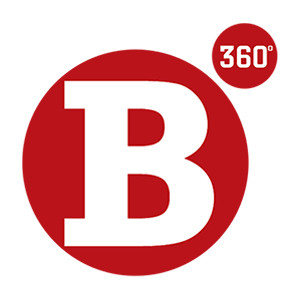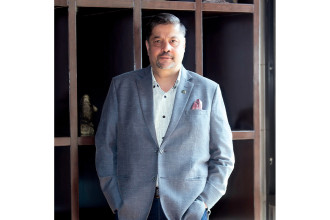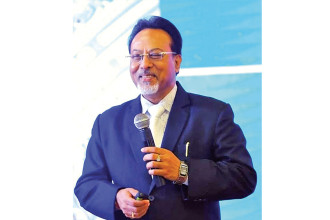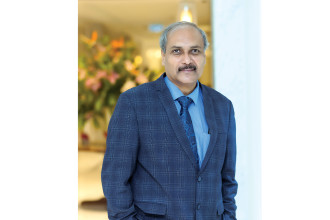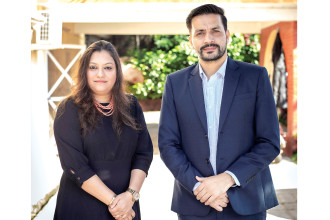-1719725436.jpg)
A Swiss business delegation was in Nepal to participate in the second fact finding mission held in March to acquaint Swiss companies with the Nepali market and its key stakeholders. It was organised by the Embassy of Switzerland in collaboration with Switzerland Global Enterprise and the Nepal Swiss Chamber of Commerce and Industries. During the visit, Business 360 caught up with Oleg Zhurov, Strategy & Operations Lead, Project Family: Safe Birth, Ferring Pharmaceuticals, who was also a part of the delegation.
Zhurov has been leading general strategy and operations of the implementation stage of the Project Family: Safe Birth, aiming to introduce quality-assured heat-stable Carbetocin Ferring for the prevention of post-partum haemorrhage at a sustainable access price in the public and not-for-profit sectors of 80+ low and lower-middle income countries since 2018.
Prior to this role, Zhurov worked at Ferring HQ on establishing and expanding the company’s capabilities in the areas of medium- and long-term corporate planning, market access, pricing, customer insights, competitive intelligence, as well as in strategic marketing, value analysis and optimisatison of R&D and BD projects. Excerpts of a conversation with Zhurov as he spoke about Ferring’s strategy for Nepal:
What is the purpose of your visit to Nepal?
The Swiss Embassy’s second fact-finding mission to Nepal presented a timely opportunity for Ferring Pharmaceuticals, a company I represent, to showcase our new product aimed at preventing maternal mortality and postpartum hemorrhage. This mission coincided perfectly with our submission of the product’s registration file to Nepal’s Department of Drug Administration (DDA). It provided an invaluable platform for us to connect with key stakeholders for the success of this initiative – the Ministry of Health, the Department of Health, and the drug regulatory agency. Additionally, we met with representatives from international organisations like USAID and WHO, with whom we collaborate globally. We are confident that exploring collaboration opportunities at both local and international levels will be crucial for the product’s success in Nepal.
What are the goals and objectives of the Project Family Support Initiative in Nepal?
Our mission is clear: No woman should die giving birth. In collaboration with the World Health Organisation, we are tackling a major cause of maternal death in developing countries; postpartum hemorrhage. Nepal, with its high maternal mortality ratio, is one of the 88 countries targeted by this initiative. Although Nepal has made progress, the current rate needs significant reduction by 2030.
This innovative drug offers a powerful solution: it’s effective, safe, and cost-effective. By introducing it in Nepal, we aim to significantly reduce preventable maternal deaths and optimise healthcare spending, particularly in the public sector. This translates to saving lives and maximising resources for maternal health. Our initial focus was on high-burden African countries and India. Bhutan’s recent approval paves the way for Nepal’s introduction, along with other regional countries.
What factors motivate Ferring to focus on the Nepali market?
Our approach differs from typical pharmaceutical investment strategies. Our core mission is to reduce preventable maternal deaths. This innovative product addresses that critical need, not just in Nepal, but across many developing countries. To achieve this, we manufacture the product in high-capacity facilities located in India and China. This allows us to keep costs low and ensure a flexible supply chain, enabling rapid delivery to countries in need, including Nepal.
Nepal presents a unique challenge due to its recently established provincial system. While the federal government makes key decisions, a dual structure exists. We are actively exploring the most effective ways to introduce the product within this new framework. It is an ongoing process and we are committed to finding the optimal implementation strategy.
How is your product uniquely positioned to improve maternal healthcare?
Our product is uniquely suited to address postpartum hemorrhage prevention, a critical challenge in remote areas. Unlike existing medications, it does not require a strict cold chain for storage and transport, freeing up resources for other vital medicines. This heat-stable product boasts a four-year shelf life, minimising stockouts, a common problem in remote regions. Additionally, it’s simple one-dose-per-delivery approach simplifies forecasting for government planners and hospital administrators.
Benefits extend beyond mothers. Healthcare workers face less pressure due to reduced stockout risks. The product also leads to fewer blood transfusions and shorter hospital stays, minimising resource strain on the healthcare system. Downstream surgical interventions are also reduced.
The impact goes beyond immediate survival. Mothers lost to childbirth significantly decrease a newborn’s chance of surviving the first year. Our product’s success translates to a dramatic improvement in the well-being of families and children for years to come.
To ensure the successful introduction of Project Family in Nepal, how will Ferring Pharmaceuticals collaborate with key local stakeholders like the Ministry of Health, healthcare providers and communities?
Collaboration is key – we aim to actively engage with all stakeholders. Since the product is for healthcare facilities, proper training for midwives, obstetricians, nurses and other delivery personnel is essential. It is not an over-the-counter medication; it requires specific administration by trained professionals. While this drug acts similarly to existing ones, it has distinct uses and requires a specific administration method. We will provide most of the training, collaborating with professional societies to integrate it into their educational programs.
The Ministry of Health plays a vital role. We will present evidence, including global WHO recommendations on postpartum hemorrhage prevention and the WHO’s Mothers Essential Medicine List, to support national adoption. We are actively exploring documentation and information requirements for the product’s inclusion in national guidelines, procurement systems and nationwide distribution.
As you navigate the regulatory landscape, cultural sensitivities, and existing healthcare infrastructure in Nepal, what potential challenges do you foresee for Project Family’s introduction?
This week highlighted the importance of understanding Nepal’s regulatory environment. While our initial documentation met basic requirements, additional details were needed. We submitted the product under a collaborative registration procedure coordinated by the WHO, leveraging Switzerland’s existing medical registration. This reliance mechanism was new to the agency, and we had a productive meeting to clarify its application within their local framework.
Public sector implementation presents another hurdle. While policies are in place, government endorsement and cascading them down to provincial and local levels takes time. We are exploring collaborative ways to accelerate this process so the product reaches healthcare facilities and patients quickly.
This isn’t the first Ferring product registration in Nepal. Our partner, Shree Om Brothers, already markets several of our products commercially. However, this was my initial visit, and it proved invaluable in planning the next steps and rollout strategy.
What is your company’s long-term vision for the Nepali market?
I see a dynamic market with significant potential. Nepal’s position between two pharmaceutical giants, India and China, presents a challenge for volume-based competition in generics. Here is where innovation can be Nepal’s niche. Exploring areas like digital health and other tech-driven solutions could offer compelling opportunities. Of course, our immediate focus is the successful introduction of our maternal health product. If it makes a real difference in reducing maternal mortality, as we expect, it might pave the way for introducing other innovative medicines in the future.
How would you assess the current state of the global pharmaceutical market?
Ferring operates as a specialty pharmaceutical company, placing us among the mid-sized players in the global market. Our focus on research and development is substantial, with a turnover of around 2.5 billion euros annually translating into continuous innovation. Just last year, the FDA approved two such innovative medicines from Ferring.
Looking ahead, we see opportunities to accelerate the introduction of these advancements. Initiatives from streamlined regulatory bodies, like leveraging data reviewed by stringent agencies such as Swiss authorities, could create faster pathways for patients to access these new technologies. While the broader pharmaceutical industry may prioritise speed, Ferring’s commitment remains on successful execution within this specific project.
What metrics will you be using to gauge the success of Project Family in Nepal?
Our key milestones for Project Family are clear. First, achieving product registration is crucial. Second, securing inclusion in Nepal’s postpartum hemorrhage prevention and treatment guidelines is essential. These initial steps pave the way for wider acceptance and utilisation. Ultimately, our success is measured by impact. We aim to see a significant number of healthcare professionals trained on proper product use, ensuring its successful integration into the national healthcare system. The ultimate objective? A demonstrable reduction in postpartum hemorrhage and maternal mortality rates in Nepal. That’s the true measure of Project Family’s success.
Can you share some insights into your R&D investment strategy and focus areas?
Ferring prioritises research and development, consistently investing 16-20% of our revenue in this critical area. As a specialty pharmaceutical company, we focus on specific therapeutic areas – reproductive health, urology, oncology, gastroenterology, and the microbiome. These fields hold immense potential for future innovation. We are developing platform technologies that can serve as a foundation for various solutions and medicines, allowing us to address a wider range of needs within these areas. This targeted approach positions Ferring at the forefront of advancements in these fields.
The use of complementary and alternative medicine (CAM) is growing globally. How does Ferring view the role of CAM alongside traditional medicine?
Traditional medicine holds a significant place in Nepal’s cultural heritage, much like in many other countries. While I can’t offer medical advice, I find it fascinating to see the potential for integrating traditional practices with evidence-based medicine. Many pharmaceutical products originated from natural sources. Aspirin, for example, comes from willow bark. Perhaps there is an opportunity to combine traditional Nepali solutions with modern scientific principles to explore new possibilities. Ferring, after all, started with animal-derived hormones before transitioning to synthetic versions. This rich history of traditional medicine in Nepal offers exciting possibilities for future discoveries and advancements in global healthcare.

